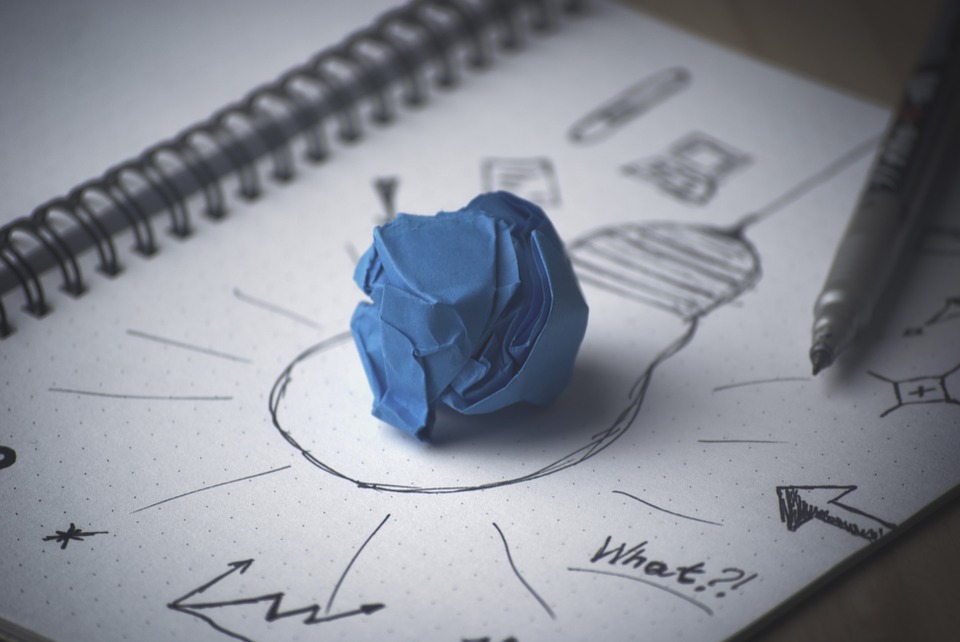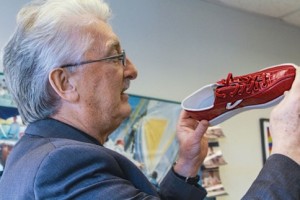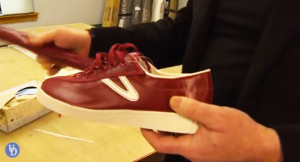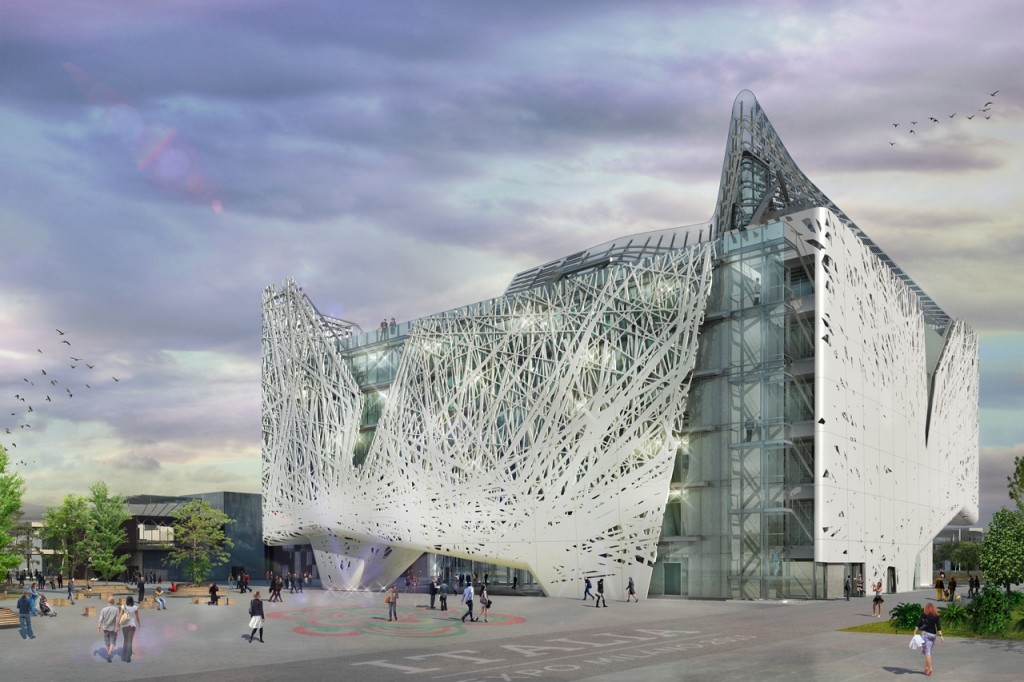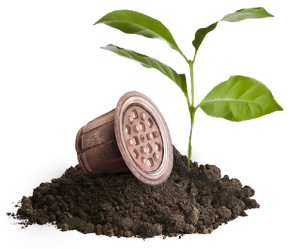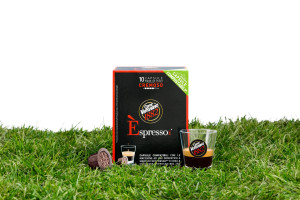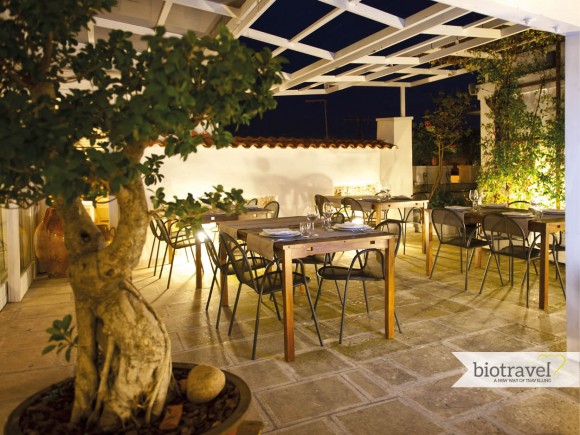Le capsule del caffè sono prodotti estremamente inquinanti, gli ecosoggiorni di Biotravel proteggono la natura, gli italiani presentano a Berlino il cemento mangia-smog (lo stesso del Padiglione Italia, Expo 2015).
Ed è solo un briciolo di tutto ciò che c’è da sapere sul mondo delle biotecnologie.
Quando si tratta di sostenibilità tutti noi ci diciamo propensi ad una politica eco-friendly, ma per essere a favore del bio è necessario anche conoscere cosa nuoce e cosa non nuoce al pianeta.
Per questo The Wakman ci tiene ad informare sulle ultime notizie nel campo dell’ecologia, proponendo quattro delle ultime nate o nascenti invenzioni che di qui a qualche anno cambieranno il nostro modo di vivere. Speriamo per sempre.
[irp posts=”3753″ name=”Hotel ecosostenibili Italia, 10 strutture ad impatto zero”]
CUOIO VEGETALE
Non è insolito sentir parlare di cuoio vegetale, ignorando che l’unica parte realmente vegetale riguardi la concia con i tannini.
Oggi invece possiamo parlare davvero di un materiale nuovo, nato dall’assemblaggio di strati di cotone, lino, mais, soia, oli vegetali. Ed è un prodotto talmente valido che aziende come Nike, Puma e Adidas ne stanno testando i campioni.
Richard Wool, scomparso non molto tempo fa, ha lasciato in eredità alla sua start-up Eco-Leather Corporation e alle aziende sopracitate la missione di portare avanti questo lavoro: un progetto per una scarpa sportiva più robusta, traspirabile e non tossica, la cui suola si ricava da scarti di industria alimentare come piume di pollo, che l’America smaltisce a tonnellate ogni anno con grande difficoltà. Sostituire il vegetale all’animale quindi non ha solo motivi etici ma anche pratici, si risparmiano acqua ed energia, e si può far a meno di inquinanti chimici per la concia. Abbiamo gli strumenti non solo per aiutare l’ambiente, ma anche per migliorare i nostri prodotti, perché come ha già detto Wool
“Possiamo progettare una pelle di qualità migliore di quella di un animale”.
CEMENTO MANGIA-SMOG
Un orgoglio tutto italiano presentato agli European Inventor Award del giugno 2014, a Berlino. Il suo vero nome è Tx-Active, ribattezzato cemento mangia-smog da chi ne ha colto l’essenza eco.
Italcementi è arrivata in finale nella categoria Industry grazie a questo innovativo film che riveste gli esterni degli edifici in cemento accelerando l’ossidazione degli inquinanti atmosferici grazie all’ossido di titanio e all’azione del Sole. L’ossido di azoto è così ridotto del 70 %, l’aria risulta più sana e la formazione di polveri sottili è scoraggiata. Luigi Cassar, professore e inventore del cemento biodinamico, ha affermato che la prima opera in cemento antismog è stata la chiesa romana Dives in Misericordia,
“con le sue vele di calcestruzzo bianche, enormi e scintillanti”.
Altri edifici sono stati il quartier generale degli uffici dell’Air France a Parigi, il Vodafone Village a Milano, il centro di Ricerca & Innovazione i.lab di Italcementi a Bergamo e, sopratutto, il Padiglione italiano dell’Expo 2015 a Milano: l’intera superficie esterna e le facciate interne della piazza dell’edificio hanno pannelli di cemento mangia-smog.
CAPSULE DEL CAFFè ECOLOGICHE
Dieci miliardi di capsule da caffè vengono vendute ogni anno, hanno ormai superato le vendite del caffè filtrato grazie alla loro estrema praticità. Eppure Asburgo le ha vietate negli uffici di amministrazione comunale a causa dei loro effetti inquinanti: troppi materiali diversi difficili da separare. A questo proposito Pla4Coffee, progetto europeo guidato da un gruppo di ricerca italiano, ha l’obiettivo di produrre entro il 2018 una capsula compostabile e biodegradabile che sostituisca alluminio, PET e PE con sostanze vegetali. Già Lavazza ne ha presentato un modello al Sustainability Lab di Cascina Cuccagna (Milano, 2015), fatto con lo stesso materiale della bioplastica dei sacchetti del supermercato, che diventa compost in 75 giorni. Dopo 5 anni di lavoro è quindi disponibile alla vendita, per ora solo online. E di nuovo Lavazza ha finalmente potuto mettere a frutto il progetto che va avanti dal 2008, in collaborazione con Novamont, il Politecnico di Torino e l’Università di Scienze Gastronomiche di Pollenzo, sull’analisi dei fondi di caffè e della loro conversione in biopolimeri, inchiostri, pellet, carta e in particolare funghi commestibili. Proprio all’Expo 2015, 1500 kg di fondi di caffè, consumato alla Piazzetta Lavazza del Padiglione Italia, sono stati trasformati in 150 kg di funghi, e risultano più nutrienti e ricchi di fosforo.
E così come Lavazza anche Caffè Vergnano ha immesso sul mercato capsule compostabile da smaltire nell’umido, vendute anche in Francia, Germania e Australia.
VACANZA BIO ECOSOSTENIBILE DI BIOTRAVEL
Biotravel: un portale online per vacanze all’insegna dell’eco-compatibilità. Nasce per tutti coloro che amano addentrarsi nella natura, assaporandone tutti gli aspetti nel rispetto del suo sistema. Le strutture offerte sono tutte provviste di certificazioni biologiche, etiche e morali: cibo biologico, investimenti nell’efficientamento bioenergetico, nello sfruttamento delle energie rinnovabili e nelle bioedilizie. Ciò per cui nasce Biotravel è offrire il benessere della persona senza trascurare il benessere dell’ambiente: un modo per soddisfare chiunque voglia godere della bellezza degli scorci italiani valorizzandoli attraverso una politica di correttezza, amore e interesse verso la natura. Come ci hanno detto gli stessi fondatori ai microfoni di Radio Luiss, il loro lavoro di attenta selezione delle strutture (testate una per una) li ha portati ad offrire il meglio del bio ai loro clienti, mettendo a disposizione anche attività volte alla conoscenza delle culture e delle tradizioni locali. Uno di loro ha rivelato di aver iniziato a credere in questo progetto nel momento in cui ha capito che era quello che la gente cercava: tanti di noi sono disposti a vivere un’esperienza ecosostenibile, ma pochi hanno mai avuto davvero l’opportunità di farlo. Ma girando sul loro portale troviamo molto di più: Biotravel fa informazione, ha un blog ricco che si può definire quasi un manuale di ecosostenibilità. Perciò, tra soggiorni di coppia, ville, appartamenti e agriturismi, chiunque sceglie Biotravel sa di stare viaggiando
“a ritmo con la natura, alla scoperta di suoni e colori, nel rispetto dell’ambiente e di noi stessi”.
[irp posts=”5140″ name=”Sostenibilità Ambientale, con Biotravel arriva una nuova idea di turismo sostenibile”]
[divider]ENGLISH VERSION[/divider]
Coffee capsules are really polluting products, Biotravel eco-stays protect nature and Italians presented in Berlin the smog-eating cement (the same as the one from the Italian Pavillon, Expo 2015).
And this is only a bit of what there is to know about the world of biotechnologies.
When we talk about sustainability, we all declare ourselves to have a propensity for an eco-friendly policy, but in order to support bio, it is necessary to know what damages our planet and what doesn’t.
That’s why The Walkman considers it important to inform people about the latest news in the field of ecology, by proposing four of the newborn or nascent inventions that a few years from now will change our lifestyle. We hope forever.
VEGETABLE LEATHER
It is not unusual to hear about vegetable leather, without realizing that the only eco-friendly thing about it concerns tanning.
Today instead we can really talk about a new material, that was born from an assembly of layers of cotton, linen, corn, soy and vegetable oil. And it is such a valid product that some companies like Nike, Puma and Adidas are already testing its samples.
Richard Wool, who passed away recently, has bequeathed the mission of continuing this work to his start-up Eco-Leather Corporation and to the above-mentioned companies: a project for a sturdier, breathable and not toxic sporting shoe, the sole of which is obtained from the waste of food industries like chicken feathers, of which America disposes of many tons every year with great difficulty. Replacing materials of animal origin with vegetable materials isn’t just for ethical reasons, but for practical ones as well; water and energy are saved, and chemical pollutants are not needed for tanning.
This provides us with ways to not only help the environment, but also to improve our products, because as Wool already said:
“We can design a better quality leather than that of an animal”.
SMOG-EATING CEMENT
It is a 100% Italian project presented at the 2014 European Inventor Award, in Berlin. Its real name is Tx-Active, renamed as smog-eating cement by the people who understood its eco essence.
Italcementi got to the final in the Industry category thanks to this revolutionary film which covers the exterior of cement buildings, accelerating the oxidation of atmospheric polluters through titanium oxide and the action of the sun. In this way nitrogen oxide is reduced by 70%, the air is healthier and the formation of fine dusts is discouraged. Luigi Cassar, professor and inventor of the biodynamic cement, has stated that the first building made with antismog cement was the Roman Church Dives in Misericordia,
“With its white rib vaults built in concrete, enormous and shining”
Other buildings were the Air France general headquarters in Paris, the Vodafone Village in Milan, the Italcementi i.lab Research & Innovation centre in Bergamo and, most of all, the Italian Pavilion of the 2015 Expo in Milan: the whole external surface and the inner facades of the building square have panels made of smog-eating cement.
ECOLOGIC COFFEE CAPSULES
Ten billion coffee pods are sold every year, and they have already surpassed the sales of filtered coffee thanks to their extreme practicality. Still, Hamburg has forbidden them in offices of public administration because of their polluting effects: too many different materials hard to separate. For this reason, Pla4Coffee, a European project managed by an Italian group of research, wants to produce by 2018 a compostable and biodegradable capsule which could replace aluminum, PET and PE with vegetable substances. Lavazza has already presented a model at the Sustainability Lab of Cascina Cuccagna (Milan, 2015), made from the same material as the bioplastic of supermarket bags, which becomes compost within 75 days. After 5 years of work it’s available for selling, although only online for now. And Lavazza was again able to make the most of its project started in 2008 in collaboration with Novamont, the Polytechnic University of Turin and the University of Culinary Sciences of Pollenzo, based on the analysis of coffee grounds and on their conversion to biopolymers, inks, pellet, paper and particular edible mushrooms. At the 2015 Expo, 1500 kg of coffee grounds, consumed in Piazzetta Lavazza at the Italy Pavilion, have been converted into 150 kg of mushrooms, and seem to be more nutritious and rich of phosphorus.
Caffè Vergnano got the same idea as Lavazza and launched on the market compostable pods that have to be thrown with wet waste for disposal and are also sold in France, Germany and Australia.
BIOTRAVEL’S ECO SUSTAINABLE BIO VACATION
Biotravel: an online portal for vacations dedicated to eco-compatibility. It’s for all the people who love to explore nature, tasting each of its aspects in total respect of its system. The offered structures are provided with biological, ethical and moral certifications: organic food, investments in bioenergetic efficiency, in the employment of renewable energies and in green building. The aim of Biotravel is to offer people wellness without disregarding environment wellness: a way to satisfy everyone who wants to enjoy the beauty of glimpses into Italy’s wilderness, enhancing them through a policy of decency, love and interest in nature. As the founders themselves said to the microphones of Radio Luiss, their job of accurate selection of the structures (tested one by one) brought them to offer the best of bio to their customers, making also available some activities with the purpose of getting to know local cultures and traditions. One of them revealed that he began to believe in this project when he understood that it was what people were looking for: many of us are ready to live an eco-sustainable experience, but only few have ever had the opportunity to do so. But surfing their website we find much more: Biotravel educates, and has a rich blog which could be defined as an eco-sustainability manual. So, by choosing Biotravel’s couple vacations, mansions, apartments and agritourisms, we know that we’re traveling
“in rhythm with nature, to discover sounds and colors, in respect of the environment and in respect of ourselves”.
Traduzione a cura di Eleonora Martelli

